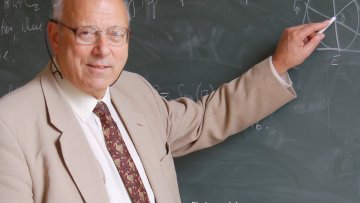Generalising Calabi-Yau for generic flux backgrounds
Abstract
Calabi-Yau manifolds without flux are perhaps the best-known
supergravity backgrounds that leave some supersymmetry unbroken. The
supersymmetry conditions on such spaces can be rephrased as the
existence and integrability of a particular geometric structure. When
fluxes are allowed, the conditions are more complicated and the
analogue of the geometric structure is not well understood.
In this talk, I will define the analogue of Calabi-Yau geometry for
generic D=4, N=2 backgrounds with flux in both type II and
eleven-dimensional supergravity. The geometry is characterised by a
pair of G-structures in 'exceptional generalised geometry' that
interpolate between complex, symplectic and hyper-Kahler geometry.
Supersymmetry is then equivalent to integrability of the structures,
which appears as moment maps for diffeomorphisms and gauge
transformations. Similar structures also appear in D=5 and D=6
backgrounds with eight supercharges.
As a simple application, I will discuss the case of AdS5 backgrounds
in type IIB, where deformations of these geometric structures give
exactly marginal deformations of the dual field theories.


